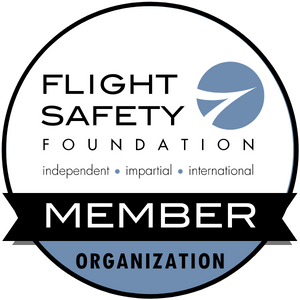Navigating the BASA Annex 2 Special Condition: Five Pillars of SMS Compliance for EASA Approved U.S. MROs
When the U.S.–EU Bilateral Oversight Board (BOB) signed Decision No. 13 earlier this year, it quietly rewrote the rulebook for every U.S. maintenance, repair and overhaul (MRO) organization that holds—or hopes to hold—European Union Aviation Safety Agency (EASA) Part 145 approval. The decision inserted a Special Condition into BASA Annex 2 that obliges affected repair stations to establish, implement and maintain a Safety Management System (SMS) that meets the minimum standards of 14 CFR Part 5 and is fully woven into day to day operations.
- New applicants must present a compliant SMS at the moment of application (effective 10 Feb 2025).
- Existing certificate holders must file an SMS declaration by 10 Oct 2025 and show full integration no later than 31 Dec 2025.
Submitting an SMS manual or a short “letter of declaration” is therefore only the first step. True compliance lives in the utilisation of the system—something many organisations overlook.
Why a “Manual Only” Approach Will Fail in 2026
Many repair stations believe that once their manual is accepted by the FAA/EASA team, they can “tick the box.” Unfortunately, the Special Condition explicitly requires implementation and maintenance. Under a manual heavy workflow that means:
- Re keying report data from paper to Excel
- Manually chasing overdue audits and actions
- Emailing document revisions to dozens of recipients
- Collating evidence packages just before inspections
The administrative burden balloons—especially as the average MRO already faces fatigue, high staff turnover, and a looming shortage of skilled technicians.
The Five Core Criteria You Actually Have to Meet
While ICAO Annex 19 and EASA regulation outline dozens of detailed expectations, every audit checklist eventually maps back to five inter locking criteria: Safety Policy & Objectives, Hazard Identification & Risk Management, Safety Assurance, Safety Promotion & Training, and Documentation & Record Keeping. These are not optional extras; each must be demonstrated in operation to satisfy the Special Condition.
1. Safety Policy & Objectives
Your documented policy has to be visible in how executives allocate resources, set KPIs and make decisions. Auditors will ask: Who owns safety performance? How is the accountable manager involved?
2. Hazard Identification & Risk Management
Risk registers must be living artefacts, not static spreadsheets. Investigators will look for evidence that frontline personnel can report hazards easily and that management is actively analysing and mitigating them.
3. Safety Assurance (Monitoring, Audits, Corrective Actions)
Paper check lists alone no longer pass muster. You need closed loop processes that track findings, corrective actions, and effectiveness reviews—ideally with digital time stamps and audit trails.
4. Safety Promotion & Training
All staff—technicians, planners, contractors—must understand their role in the SMS. Records of initial and recurrent training, safety briefings and open reporting culture assessments are routinely sampled.
5. Documentation & Record Keeping
Manuals, forms and evidence of utilisation have to be controlled, current and instantly retrievable. If your organisation still relies on network drives and email for version control, compliance risk is growing by the day.
The Workforce Squeeze Adds Urgency
Industry modelling projects a shortfall of roughly 48,000 aviation maintenance technicians in North America by the early 2027, or a shortfall of 27%, intensifying pressure on existing staff and making error trapping systems even more critical. When people are stretched thin, only integrated digital workflows can keep safety data flowing without becoming a secondary job.
Conclusion: Turning Compliance into an Advantage
The BASA Annex 2 Special Condition is a clear signal: SMS must be active, embedded, and measurable. By 2026, manual, paper-heavy systems will slow operations, hide risks, and put approvals at risk—especially with staffing shortages mounting.
An integrated digital SMS streamlines reporting, automates follow-up, centralises documents, and gives leaders real-time oversight. It reduces admin work, keeps evidence audit-ready, and ensures safety is visible in daily operations.
TrustFlight’s Centrik SMS is built for MROs facing these pressures, combining policy, risk, assurance, training, and records in one system. The deadline is fixed. The choice is simple—spend resources chasing paperwork, or run a live, efficient SMS that meets the rule and strengthens your operation.
Let's get started
Talk to our sales team to find out how you can transform your operation with our products and services.

